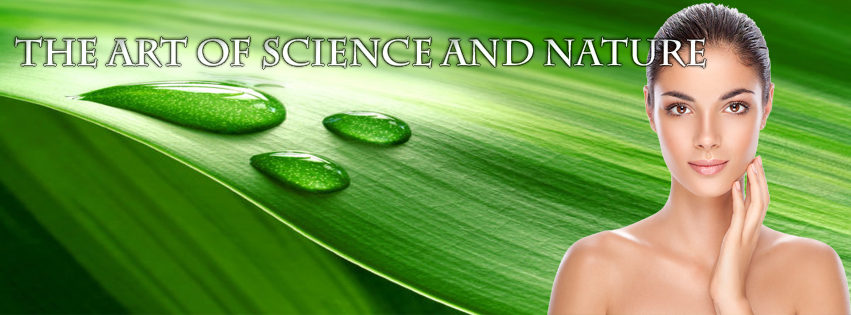
Combining modern science with ancient wisdom of Aroma Therapy, Zorica’s intention is to provide customer with the products that not only nourish, protect and nurture there skin but also to balance mind, body and spirit while protecting our fragile environment. Zorica of Malibu has gathered the finest organic and natural ingredients from around the world. Most of the ingredients are linked directly to poverty alleviation programs established for the dual purpose of care taking local environments while producing sustainable economic benefits.
Aromatherapy is the practice of using essential oils, for psychological and physical well-being. Essential oils contain the true essence of the plant it was derived from.
Essential oils are not the same as perfume or fragrance oils. Where essential oils are derived from the true plants, perfume oils are artificially created fragrances or contain artificial substances and do not offer the therapeutic benefits that essential oils offer.
The two most beneficial blends of essential oils carefully chosen by Zorica are:
Lavender /Rose Geranium blend, to relief stress, calm our mind and relaxes our body & Grapefruit/Vanilla blend to uplift and energize our mind, body and spirit.
Organic True Lavender (Lavender angustifolia)

From France (Steam Distilled). This is the most highly sought after oil by perfume makers and laboratories. The name lavender comes from the Latin root lavare, which means "to wash." Lavender most likely earned this name because it was frequently used in baths to help purify the body and spirit. Research has confirmed that lavender produces calming, soothing, and sedative effects.
True Lavender that Zorica of Malibu uses is grown at 600-800mts above sea level on the slopes of the Lure Mountains in Provence. Lavender's aroma is floral, herbaceous, light with woody undertones. Among its many properties, it's known to be antidepressant. Soothes the spirit, relieves anger, valuable in manic-depressive cases.
Lavender fields begin blooming in June. Lavender is harvested from July to September, when the hot summer sun brings the essence up into the flower. The harvesting is done with more and more automation, but the older fields with narrow rows are still picked by hand. A small still is moved from field to field during harvesting, and process the lavender immediately upon picking.
Steam distillation is used to extract essential oil. It takes 250 pounds of Lavender flowers to make 1 liter of the essential oil.
Rose Geranium from Egypt
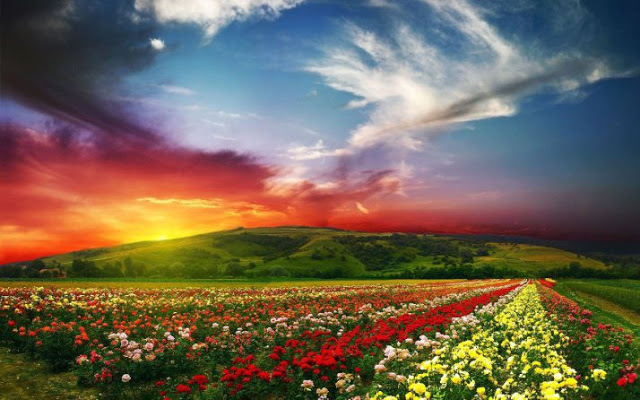
Geranium (Pelargonium graveolens) essential oil has been used as far back in history as ancient Egypt. It was Cleopatra favored oil to use in her bath. Geranium was brought to Europe in the late 17th century and became popular during the Victorian era; fresh leaves of Geranium were placed at formal dining tables and used as finger bowls. In the Victorian parlor, the potted Rose Geranium plant was placed on tables, where a fresh sprig could be obtained.
Geranium is sweet, heavy aroma, somewhat like rose with a minty overtone. Among its properties is analgesic, antidepressant. Calms anxiety, lifts the spirit, assists with depression. Useful for all conditions of the woman's reproductive system as an inhalant and massage application, beneficial for PMS. Assists with breast inflammation. Helps clear the body of toxins and this may be helpful with addictions. Stimulates the lymphatic system which keeps infection at bay. Eases neuralgia. Indicated for all problems of the nervous system such as anxiety and nervous fatigue. The oil is a diuretic and a lymphatic stimulant which can help relieve congestion, fluid retention and swollen ankles. Useful for all skin conditions as it balances sebum. Good for oily skin. It's an excellent remedy for burns, wounds and ulcers. Essential oil is extracted by using steam distillation.
Grapefruit from South Africa
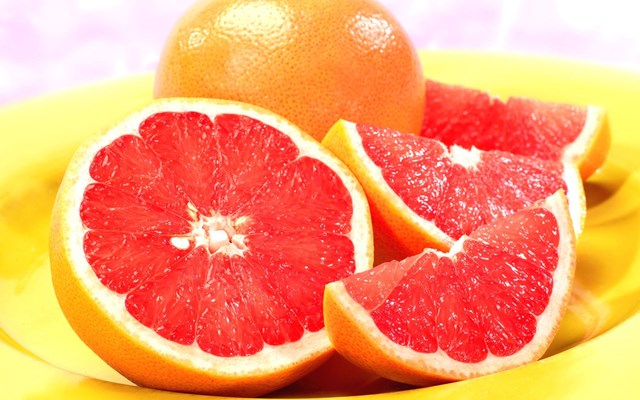
(Cold pressed) GRAPEFRUIT (CITRUS PARADISI). Refreshing and reviving, especially when feeling down. This oil clears the mind and uplifts the spirits. A sharp, clear citrus fragrance. Grapefruit oil is extracted from Citrus paradisi (a.k.a. Citrus racemosa amd C. maxima var. racemosa) from the Rutaceae family and is also known as shaddock.
Grapefruit essential oil has a sharp refreshing aroma, is pale yellow and the viscosity is watery. The origin of grapefruit oil originally from Asia, it is now cultivated in the USA, Brazil, South Africa and Israel. Grapefruit is a glossy-leaved tree, about 10 meters (30 feet) high, with white flowers and large, pale yellow fruit. The oil glands are imbedded deep within the peel and yield a small amount of essential oil.
Some of the therapeutic properties of Grapefruit oil are, it is antidepressant, antiseptic, diuretic and disinfectant, stimulant. Invaluable in times of stress and depression as it uplifts and revives the spirit. May have an effect on obesity and fluid retention, is useful for treating water retention and is detoxifying. Ideal for treating cellulite. It has a stimulating effect on the digestive system. Helpful in treating acne, congested and oily skin. Relieves migraine and premenstrual tension and jet lag. Clinical study shows that women wearing grapefruit essential oil scent are perceived 10 years younger by men.
Organic Vanilla from Madagascar

(CO2 Distilled) Fair Trade. Vanilla beans are actually the fruits of the tropical orchid variety Vanilla Planifolia. Of the many thousand of varieties of orchids this is the only one that bears edible fruit. The pods looked like green beans when ripe, after harvesting they need to be cured to develop that rich flavor. Vanilla beans are grown in tropical climates only. Some of the more popular countries are Madagascar and the surrounding islands, Uganda, Indonesia, Tahiti, Mexico, India and Hawaii.
According to an ancient Totonac legend, the tropical vanilla orchid was born when Princess Xa'nat, forbidden by her father from marrying a mortal, fled to the forest with her lover. The lovers were captured and beheaded. Where their blood touched the ground, the vine of the vanilla orchid grew.
Vanilla is the world's most labor-intensive agricultural crop, which is why it's so expensive. It takes up to three years after the vines are planted before the first flowers appear. Vanilla is laboriously hand-pollinated by 100s of workman from neighboring villages. The fruits, which resemble big green beans, must remain on the vine for nine months to completely develop their signature aroma before they are hand-harvested and the lengthy process of curing, sweating and drying begin. The entire curing process sometimes may stretch up to nine months.
Flowering normally occurs every spring, and without pollination, the blossom wilts and falls, and no vanilla bean can grow. Each flower must be hand-pollinated within 12 hours of opening. The only insect capable of pollinating the blossom is the Melipona, a bee, native only to Mexico. A vine remains productive between 12 and 14 years.
Vanilla is known as an aphrodisiac: Vanilla essential oil is used on the patients of impotency, frigidity, loss of libido etc. can relieve them of their problems, and it is well proven. This oil stimulates secretion of certain hormones like testosterone, estrogen etc. This oil has a relaxing and calming effect on the brain and the nerves and gives relief from anxiety, anger, restlessness etc. It stabilizes emotions and consoles when sadness or grief seems to over power us.
Ylang Ylang (Cananga Odorata)
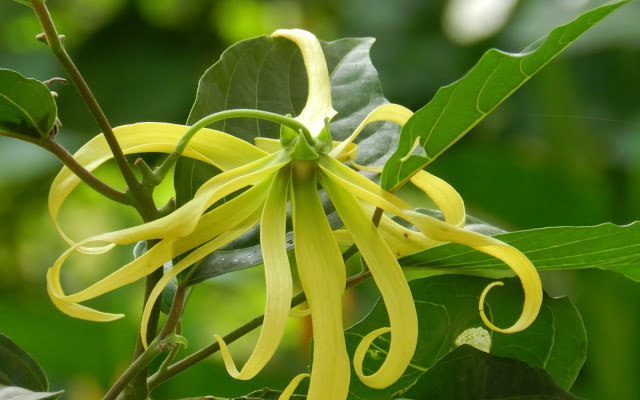
From Indonesia (Steam Distilled). This extremely fragrant essential oil has a calming effect on the mind and body. On the skin, ylang-ylang oil has a soothing effect and its balancing action sorts out over-dry as well as overly-oily skin by balancing the secretion of sebum.
It has an exotic, sweet smell and is slightly yellow in color. It is a tall tropical tree about 20 meters (60 feet) high with large, tender, fragrant pink, mauve or yellow flowers and is cultivated in Java, Sumatra, Reunion, Madagascar and the Comores. The name means 'flower of flowers'.
In Indonesia, the flower petals are strewn upon the bed on wedding nights. Ylang-ylang oil is extracted from the freshly picked flowers by water or steam distillation.
Ylang-ylang oil has a euphoric and sedative effect on the nervous system and helps with anxiety, tension, shock, fear and panic while the aphrodisiac qualities is useful for impotence and frigidity. It is particularly useful with rapid breathing and rapid heartbeat; it can also help with reducing high blood pressure.
Jojoba Oil (Simmondsid Chinensis)
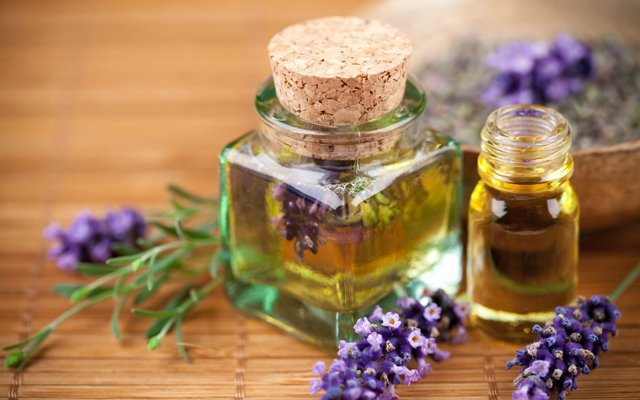
Sonora Desert North America (Cold Pressed). Jojoba “oil” is different from other vegetable oils in that it is not actually triglyceride oil but a liquid wax. Its unique chemical makeup mimics the sebum naturally present on human skin. This is what makes it such a desirable product for the cosmetics we use everyday. According to the International Jojoba Export Council, jojoba is odorless, natural, non-greasy, and extremely stable. It doesn't break down when exposed to water or oxygen and, a natural carrier of Vitamin E and a natural antioxidant; it is an extremely efficient non-comedogenic moisture regulator, penetrating the skin to moisturize without blocking the pores.
The female plant produces seeds from the flowers pollinated by male plant.
Benefits of jojoba oil are many: Penetrates skin rapidly to reduce water loss reduce wrinkles and stretch marks. Cleans clogged pores and restores skin's natural pH balance. Lighten skin marks and scars. Jojoba oil is easily absorbed and rarely causes allergic reactions, even in the most sensitive individuals.
The unique properties of jojoba had been discovered by chemists in the 1930's. Traditionally, sperm whale oil had been the product of choice for use in cosmetics. But the 1971 U.S. ban on sperm whale oil import sent cosmetics manufacturers looking for a suitable replacement. Jojoba fit the bill. Jojoba oil that Zorica of Malibu use is cold pressed, comes from Sonora Desert (Arizona) grown on 2000 acres farm . Jojoba oil growth helps sustain farming in the communities and helps save precious desert water.
Organic Olive Oil (Olea Europaea)

Argentina (Cold Pressed). 'Olea europaea,' are the oldest fruit trees and certainly are one of the most important fruit trees in history. Olive tree culture has been closely connected to the rise and fall of Mediterranean empires and other advanced civilizations throughout the ages.
Greek mythology records that Athena, the Goddess of wisdom and peace, struck her magic spear into the Earth, and it turned into an olive tree, thus, the location where the olive tree appeared and grew was named Athens, Greece, in honor of the Goddess, Athena. Local legend tells us that the original olive tree still stands growing after many centuries at the ancient sacred site. Olive oil is extracted from an olive fruit. There is no heat or chemicals use when extracting the oil Vitamin E, Vitamin K and phenols are also in this famous oil. There is 1.6mg of vitamin E in a tablespoon of olive oil; vitamin E is naturally an anti-oxidant. Vitamin E is also known for maintaining beautiful and youthful skin.
Phenols is in extra virgin olive oil it is known to be anti-inflammatory, anti-oxidant and anticoagulant. Antioxidants help to neutralize free radicals and repair damage to cell membranes caused by being around things like cigarette smoke, pollution, alcohol and radiation. This is why this oil is good for having flawless skin.
Zorica uses organic extra virgin Olive oil it is cold pressed and comes from Argentina try Fair Trade.
Aloe (Aloe Barbadensis)

Mexico (Cold Pressed). Aloe Vera is a cactus-like plant but is actually part of the lily family. There are over 300 varieties of the Aloe plant, but it is the Aloe barbadensis variety that exhibits the best medicinal properties. As per legend, it was the miraculous healing power of Aloe Vera that prompted Alexander the Great to conquer the island of Socotra. Cleopatra’s famed beauty is also attributed to the natural goodness of Aloe Vera. While the Arabs have a tradition of placing it at graves as a symbol of regeneration and resurrection, the African hunters used its gel as a deodorant. With the recent resurgence of herbal products as a part of ‘green movement’, Aloe Vera is witnessing a new renaissance across the world.
Aloee Vera’s use can be traced back 6,000 years to early Egypt, where the plant was depicted on stone carvings. Known as the "plant of immortality," aloe was presented as a burial gift to deceased pharaohs. Native to Northern Africa, Aloe Vera is a stemless or very short-stemmed succulent plant growing to 80–100 cm tall, spreading by offsets and root sprouts. The leaves are lance late, thick and fleshy, green to grey-green, with a serrated margin. The flowers are produced on a spike up to 90 cm tall, each flower pendulous, with a yellow tubular corolla 2–3 cm long./p>
For years, holistic beauty specialists have known that Aloe has the unique ability to stimulate cell renewal. Yet, until recently, no one knew why this was true. Now research is underway to discover the key to Aloe's cell proliferating properties.
In studies conducted by Dr. Ivan E. Danhof, M.D., Ph.D., president of North Texas Research Laboratories and a retired Professor of Physiology from the University of Texas, the interior gel from Aloe Vera was found to increase production of human fibroblast cells six to eight times faster than normal cell reproduction.
Fibroblast cells are found in the dermis of the skin and are responsible for fabricating collagen, the skin's support protein. Aloe leaf extract is widely-known plant extract with soothing, healing and antiseptic properties that helps maintain moisture balance in the skin.
Chamomile (Recutita Matricarid)

From Germany (Steam DistilledIt). is also known as wild chamomile or German chamomile, it is a small white flower found try out the Europe and North Asia, and it blooms between May and August.
The tiny daisy-like flowers of German chamomile have white collars circling raised, cone-shaped, yellow centers and are less than an inch wide, growing on long, thin, light green stems. Sometimes chamomile grows wild and close to the ground, but you can also find it bordering herb gardens. It can reach up to three feet.
The medicinal use of chamomile dates back thousands of years to the ancient Egyptians, Romans, and Greeks.
Chamomile extract is rich in essential oils this natural plant extract is antiallergenic and anti-inflammatory, and has been known to treat and heal dry or damaged skin. .
Organic Green Tea Extract (Camellia Sinensis)

From the Himalayas. It is a large shrub with white flowers and is indigenous to Asia and China, but commercially grown in Africa, Sri Lanka, Malaysia and Indonesia. The young leaves and buds are used I making of the tea extract by steam distillation.
It contains the polyphenols - Epigallocatechin galate (EGCC) is thought to be 200 times more powerful than vitamin E for neutralizing free radicals. Since free radicals can attack and damage the DNA of the cells, the antioxidant effect of green tea has a protective role to play as well, since it prevents free radical damage and possible skin tumors and cancers and can be used in confidence as an anti-aging ingredient in skin care preparation.
It has also been showed that the EGCC in green tea is effectively absorbed via the skin.
Green tea leaf extract rich in essential oils is a potent anti-inflammatory agent thereby reducing inflammation in the skin, and most importantly having an inhibitory action on collagenase, which is a collagen-reducing enzyme that breaks down collagen.
The topical use of green tea helps to promote the health and quantity of collagen, thereby maintaining a firm and elastic skin.
Zorica of Malibu uses Green tea leaf extract that comes from green tea that abundantly grows in the foothills of mighty Himalayas.
Organic Grapeseed Oil
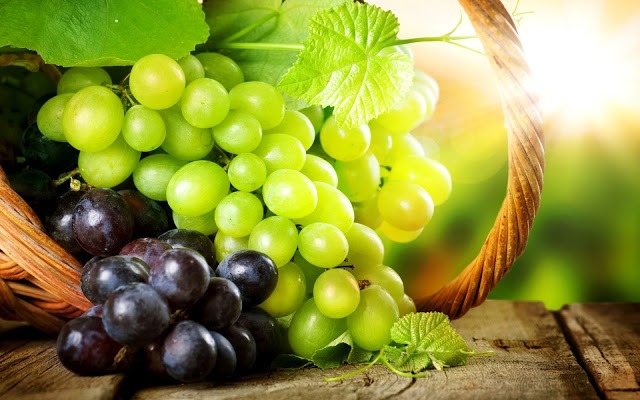
From Argentina Fair Trade (Cold Pressed). Also called grape oil is a vegetable oil pressed from the seeds of various varieties of Vitis vinifera grapes, an abundant by-product of winemaking. Extracting grapeseed oil is much more difficult than other oils because the grape seed itself is very small. Most grape seed oil is produced in Italy, with other producing nations including France, Spain, and Argentina. Although known to Europeans for centuries, grape seed oil was not produced or used on a large scale until the 20th century.
Researchers have discovered that grape seed oil contains OPCs (Oligomeric Proatnthocyanidins) that play in stabilizing of collagen and maintenance of elastin, two important proteins that support our skin. It I a very powerful antioxidant, that protects skin from premature aging.
Scientific studies have shown that the antioxidant power of the Proanthocyanidins found in the grape seed extract 50 times grater than Vitamin E and 20 times than Vitamin C.
Grape seed oil is a preferred cosmetic ingredient for damaged and stressed tissues, possessing regenerative and restructuring qualities which allow for strong control of skin moisturization. It can help skin retain the normal structure of epithelium cells and nerve cells via supporting the cell membranes. Used as an all-over skin moisturizer, grape seed oil is known to reduce the look of stretch marks and varicose vans.
Witch hazel extract from Florida
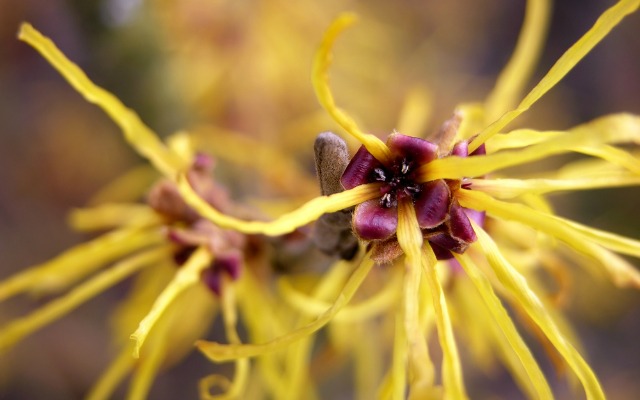
Witch Hazel extract is produced from the leaves and bark of the North American Witch Hazel shrub (Hamamelis virginiana), which grows naturally from Nova Scotia west to Ontario, Canada and south to Florida, and Texas in the United States. This plant was widely used for medicinal purposes by American Indian’s the witch hazel extract was obtained by steaming leafs and young twigs of the shrub.
This small tree or tall shrub is often multi-trunked and usually grows10-15 ft. tall but can reach 35 ft. in height. The large, crooked, spreading branches form an irregular, open crown. The floral display of witch hazel is unique. Its fragrant, yellow flowers with strap-like, crumpled petals appear in the fall, persisting for some time after leaf drop. Lettuce-green, deciduous leaves maintain a rich consistency into fall when they turn brilliant gold. Bark is smooth and gray.
Witch hazel hydrosol is used in skin care. It is a strong anti-oxidant and astringent, which makes it very useful in fighting acne it is often used as a natural remedy for psoriasis, eczema, aftershave applications, ingrown nails, to prevent sweating of the face, cracked or blistered skin, for treating insect bites, poison ivy, and as a treatment for varicose veins.
Seaweed extract (Laminaria digitata)

From coast of Brittany. It is sometimes also referred to as Atlantic kelp and as with all seaweeds, is rich in compounds that are of specific use in the cosmetic industry, such as polygalactosides, fucose polymers and ursolic acid. Polygalactosides react with the protective outer surface of the skin and the ion-ion interaction forms a protective moisturizing complex, while the fucose polymers are hygroscopic and act as hydrating agents. The ursolic acid can help form a protective barrier on the skin.
The above-mentioned compounds contain abundant non-essential and essential amino acids such as proline, glycine and lycine - all of these are also found in the elastic fibers of the skin - and maintain and improve skin elasticity by improving hydration. There are different types of seaweed, most common are red, green and brown .
Humans have found uses for seaweed for more than a thousand years. In parts of Europe, the oldest written records indicate that seaweed has been collected from rocky shores since at least 600AD. The amazing anti aging power of seaweed was discovered on the hands of the fisherman, while there faces are wrinkled and damaged by the sun there hands appeared smooth and young looking, they used there hands to remove seaweed from there fishing nets. In 1904 French biologist discovered that mineral contains of seaweed are similar to human plasma.
It is said that cosmetic products rich in seaweeds tighten and tone, stimulate and improve blood and lymph circulation, deep clean, and increase the skin’s moisture levels and elasticity. Seaweed is also used to oxygenate and detoxify the skin to reduce the appearance of cellulite. Seaweed enhanced cosmetics are also used as an exfoliant to slough off dead skin cells. Seaweeds are rich in micro-nutrients such as iron, zinc, copper, cobalt, manganese and boron that aid in the skin’s ability to absorb and maintain the minerals that promote a healthy, glowing appearance.
Organic Sugar (sucrose)
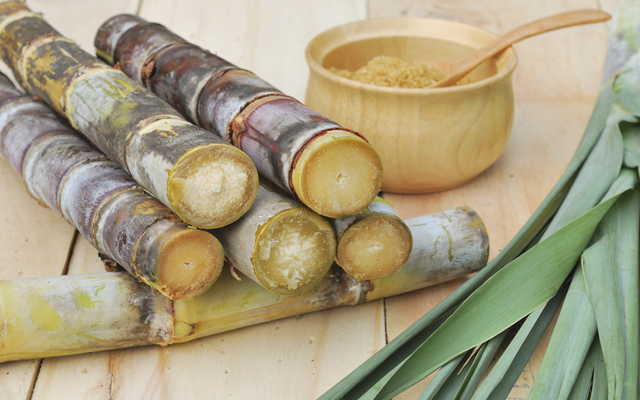
From Maui. Derived from sugar cane; contains glycolic acid a naturally occurring alpha hydroxyl acid, gentle exfoliant and antioxidant Sugar cane looks like a smaller version of bamboo. It is similar, but where bamboo has hollow "cells", sugar cane has a pourous membrane that fills the cell.
Generally, the cane is shredded and then crushed to extract the juice, then steamed to extract the sugar.
Zorica of Malibu sugar body scrubs are made with pure cane sugar that comes from the volcanic rich soil of 37.000 acres plantation in Maui, Hawaii.
Glycerin
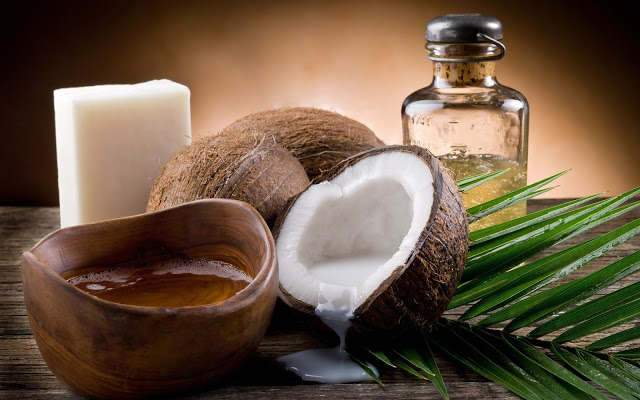
The Glycerin used in our products is natural, and derived from vegetable oil. It is a humectant, which helps to add and maintain a moisture balance in the skin. Glycerin is also an emollient, so it helps to soften the skin, which works to decrease fine lines and wrinkles. Glycerin actually absorbs moisture from the air and thereby greatly helps the skin retain its moisture.
Other Ingredients:
Sodium PCA
Sodium Pyrollidone Carboxylic acid, helps attract and retain moisture to the skin. Delivered from plants, fruits and vegetables. Sodium PCA is an incredible humectant that occurs naturally in the skin and is greatly responsible for the skin's moisture-binding capacity. Our Sodium PCA is derived from 100% natural amino acids and is highly water absorbing. Due to its moisture-binding ability, this ingredient is used in our formulations to increase the skin's softness, as it helps maintain a healthy moisture balance.
Note: The ingredients information presented here is for educational purposes only. The information we present is not intended to diagnose, treat, cure, or prevent any disease.
